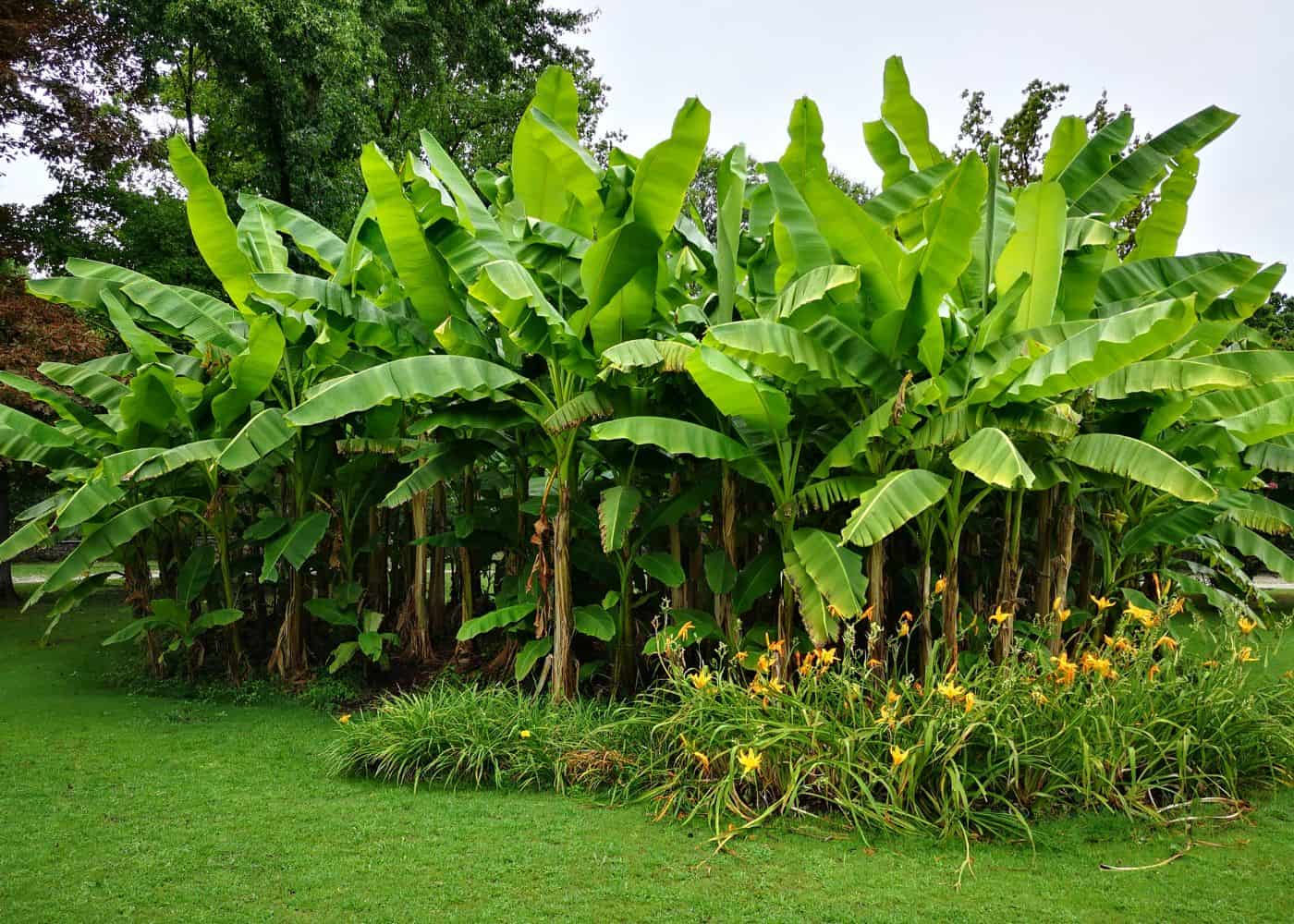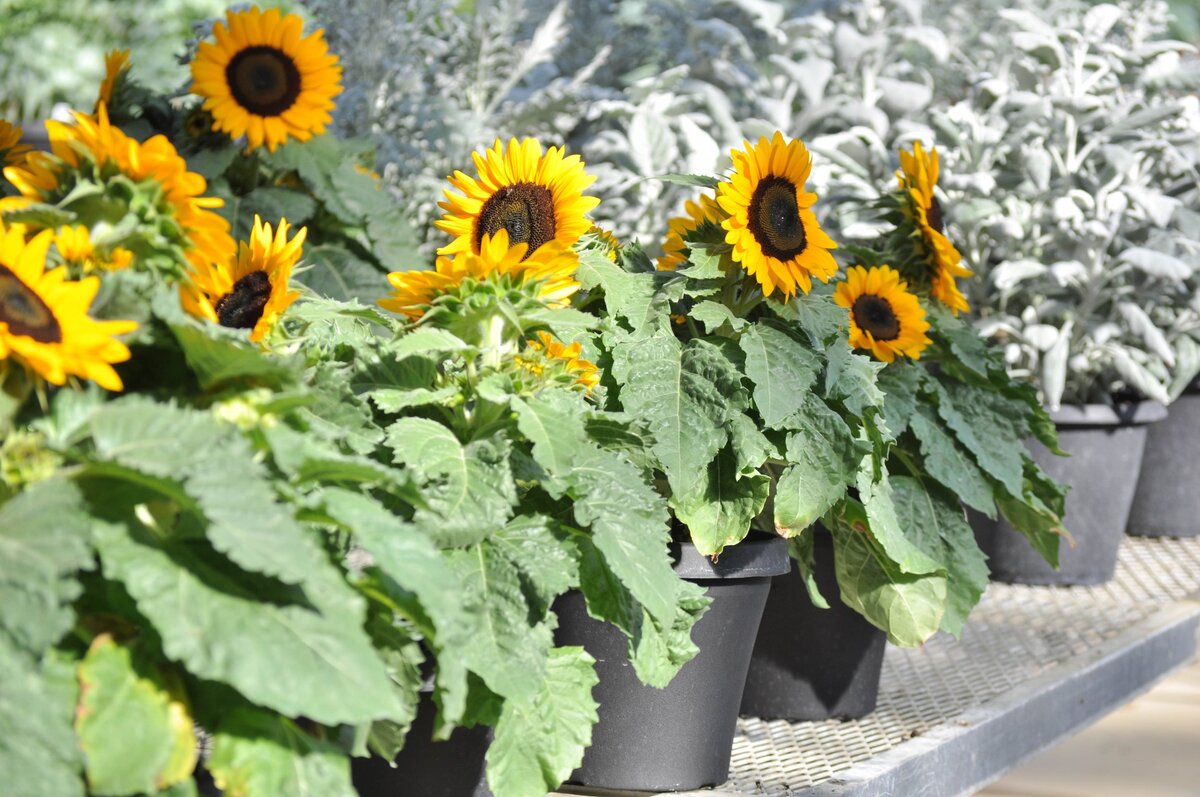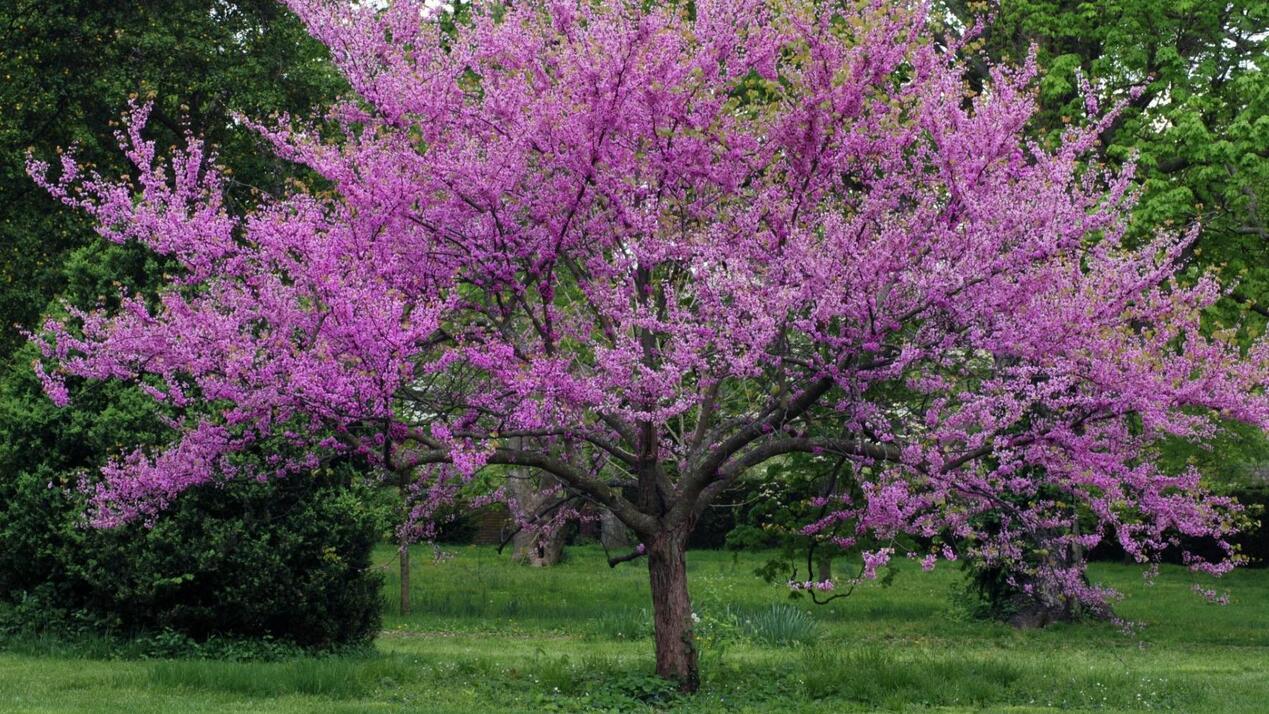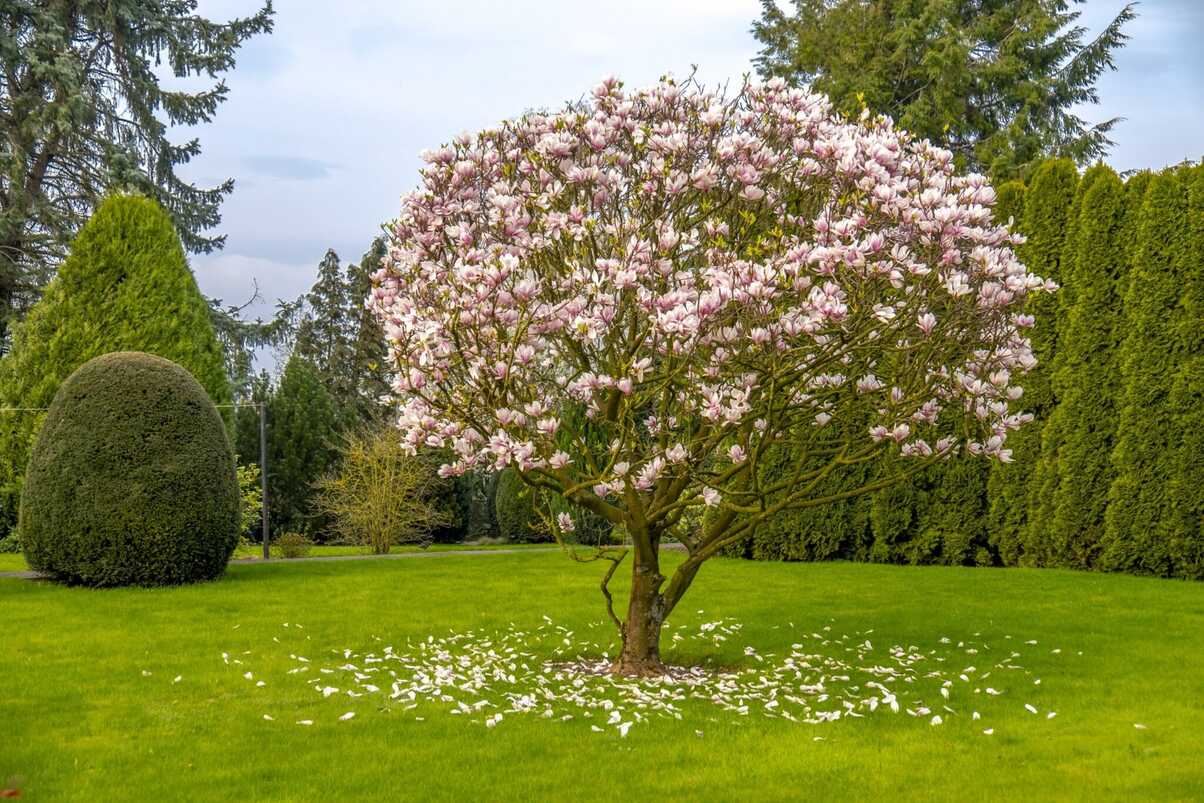Home>Garden Design>Planning Your Garden>How Tall Do Avocado Trees Grow


Planning Your Garden
How Tall Do Avocado Trees Grow
Published: October 25, 2023
Learn how tall avocado trees can grow in your garden and plan accordingly. Discover the optimal height for your avocado trees to thrive and produce abundant fruit.
(Many of the links in this article redirect to a specific reviewed product. Your purchase of these products through affiliate links helps to generate commission for Chicagolandgardening.com, at no extra cost. Learn more)
Table of Contents
Introduction
Welcome to the world of gardening! Planning and designing your garden can be a fulfilling and rewarding experience. One of the key considerations when it comes to garden planning is selecting the right plants and trees that will thrive in your specific climate and fulfill your aesthetic preferences. Avocado trees, known for their delicious fruits and lush foliage, are a popular choice among gardeners.
Avocado trees (Persea americana) are native to Central and South America and have been cultivated for centuries. These evergreen trees can add a touch of tropical beauty to your garden while providing you with a bountiful supply of nutrient-rich avocados. However, before you embark on planting avocado trees, it’s important to understand how tall they can grow and the factors that can influence their height.
In this article, we will dive into the fascinating world of avocado tree heights. We will explore the various factors that can affect their height, the average height of different varieties, pruning techniques to control their height, and how environmental conditions play a role in their growth. By the end, you will have a better understanding of how tall avocado trees can grow and how to best manage their height in your garden.
Factors Affecting the Height of Avocado Trees
Several factors can influence the height of avocado trees. Understanding these factors is crucial for successful gardening and maintaining healthy tree growth. Let’s explore the key factors that can affect the height of avocado trees:
- Variety: The variety of avocado tree you choose to plant plays a significant role in determining its ultimate height. Some varieties, such as the Wurtz avocado, are known for their dwarf or semi-dwarf growth habit, reaching a maximum height of around 10-15 feet (3-5 meters). On the other hand, larger varieties like the Fuerte or Hass avocado can grow up to 40-80 feet (12-24 meters) in height. So, selecting the right variety according to your available space and desired height is essential.
- Rootstock: The choice of rootstock can also impact the height of avocado trees. Rootstock refers to the base onto which the tree is grafted. Certain rootstocks have been specifically developed to promote dwarf or semi-dwarf growth, resulting in shorter trees. It’s important to consult with local nurseries or experts to choose the appropriate rootstock for your desired tree height.
- Age: The age of the avocado tree also plays a role in its height. Younger trees tend to be shorter compared to mature trees. As avocado trees age and establish a more extensive root system, they have the potential to grow taller. It’s important to consider the anticipated growth potential of your avocado tree when planning your garden layout.
- Pruning: Pruning is a vital maintenance practice that can influence the height of avocado trees. Regular pruning can encourage lateral branching, resulting in a shorter and bushier tree. On the other hand, if pruning is not practiced, the tree may become tall and leggy. It’s important to learn proper pruning techniques to control the height and shape of your avocado tree while promoting healthy growth.
- Water and Nutrient Availability: Adequate water and nutrient availability are essential for the optimal growth of avocado trees. Insufficient water or nutrient deficiencies can stunt the growth of trees, resulting in shorter heights. Ensuring that your avocado trees receive the correct amount of water and are properly fertilized will help promote healthy growth and maximize their height potential.
- Climate: The climate in which avocado trees are grown can significantly impact their growth and height. Avocado trees thrive in subtropical or tropical climates, with optimal temperature ranges of 60-85°F (16-29°C). In cooler climates or areas with frost, avocado trees may experience stunted growth or may not survive at all. It’s important to choose avocado tree varieties that are suitable for your specific climate to maximize their growth potential.
By considering these factors and incorporating appropriate techniques, you can effectively manage the height of your avocado trees and create a thriving garden sanctuary. Understanding how these factors interact will enable you to make informed decisions and ensure the best possible environment for your avocado tree to flourish.
Average Height of Avocado Trees
The average height of avocado trees can vary depending on the variety and growing conditions. It’s important to note that avocado trees have the potential to grow quite tall, so adequate space should be allocated when planning your garden. Here are the average heights of some common avocado tree varieties:
- Hass: The Hass avocado tree is one of the most popular varieties and can grow up to 30-40 feet (9-12 meters) tall. This variety is known for its excellent taste and creamy texture of its fruits.
- Fuerte: The Fuerte avocado tree is another common variety that can reach heights of 25-35 feet (7.5-10.5 meters). It produces pear-shaped avocados with a thin, smooth skin and buttery flesh.
- Bacon: The Bacon avocado tree is a smaller variety, typically reaching heights of 15-20 feet (4.5-6 meters). It produces medium-sized avocados with a smooth, thin skin and a mild flavor.
- Zutano: The Zutano avocado tree can grow up to 20-25 feet (6-7.5 meters) tall. It is known for its cold tolerance and is often used as a pollinator for other avocado varieties.
- Reed: The Reed avocado tree is a larger variety that can grow up to 30-40 feet (9-12 meters) tall. It produces large, round fruits with a rich, creamy taste.
It’s important to keep in mind that these heights are averages and actual heights can vary depending on environmental factors and cultivation practices. Additionally, some avocado tree varieties, such as the Wurtz or Little Cado, are dwarf varieties specifically bred for smaller gardens or containers, reaching heights of only 10-15 feet (3-5 meters).
When planning your garden, consider the average height of the avocado tree variety you choose, as well as its growth potential over time. Leave enough space for the tree to grow and spread its branches without obstruction. Proper spacing will ensure adequate sunlight penetration and airflow, promoting healthy tree growth and ample fruit production.
Remember, regular pruning can also help you manage the height of your avocado tree and keep it at a desirable size.
By understanding the average heights of different avocado tree varieties, you can select the right variety for your garden and plan accordingly, ensuring a harmonious and balanced garden landscape.
Varieties of Avocado Trees and Their Height
Avocado trees come in a variety of cultivars, each with its own unique characteristics, including height. By understanding the different varieties and their height potential, you can choose the right avocado tree for your garden based on available space and desired height. Here are some popular avocado tree varieties and their corresponding heights:
- Hass: The Hass avocado tree is one of the most widely grown varieties and can reach heights of 30-40 feet (9-12 meters). It is known for its creamy flesh and excellent flavor. The Hass avocado tree is an ideal choice for larger gardens or commercial plantations.
- Fuerte: The Fuerte avocado tree is another popular variety, reaching heights of 25-35 feet (7.5-10.5 meters). It produces pear-shaped avocados with a smooth, thin skin and a rich, buttery taste. The Fuerte avocado tree is favored by many for its versatility in culinary applications.
- Bacon: The Bacon avocado tree is a smaller variety, typically growing to heights of 15-20 feet (4.5-6 meters). It produces medium-sized avocados with a smooth, thin skin and a mild flavor. The Bacon avocado tree is an excellent choice for smaller gardens or home landscapes.
- Zutano: The Zutano avocado tree can grow up to 20-25 feet (6-7.5 meters) tall. It is known for its cold tolerance and is often used as a pollinator for other avocado varieties. The Zutano avocado tree produces elongated avocados with a mild flavor. It is a suitable choice for gardens in cooler climates.
- Reed: The Reed avocado tree is a larger variety that can reach heights of 30-40 feet (9-12 meters). It produces large, round fruits with a creamy texture and a rich, nutty flavor. The Reed avocado tree is popular among growers for its delicious fruits and ornamental value.
It’s important to note that these height ranges are general estimations, and the size of avocado trees can vary depending on environmental conditions and cultural practices. Additionally, there are dwarf and semi-dwarf varieties available, such as the Wurtz or Little Cado, which are specifically bred to be smaller, reaching heights of only 10-15 feet (3-5 meters). These dwarf varieties are perfect for smaller gardens, urban landscapes, or containers.
When selecting an avocado tree variety, consider not only its height but also its fruit characteristics, such as taste, texture, and ripening time. This way, you can choose a variety that suits both your gardening goals and personal preferences.
By understanding the different varieties and their height potential, you can make an informed decision when selecting an avocado tree for your garden. Whether you have a spacious garden or limited outdoor space, there is an avocado tree variety that will suit your needs and enhance the beauty of your landscape.
Pruning Techniques to Control Height
Pruning is an essential practice for maintaining the height and shape of avocado trees. Regular pruning helps control the height, promote lateral branching, and ensure optimal fruit production. Here are some pruning techniques you can employ to manage the height of your avocado tree:
- Heading Cut: One effective technique to control the height of your avocado tree is through heading cuts. This involves removing the terminal bud or top portion of the tree, which stimulates lateral growth. By making heading cuts, you can encourage the growth of side branches, resulting in a shorter and bushier tree.
- Thinning Cut: Thinning cuts involve selectively removing specific branches or fronds to open up the canopy and allow better light penetration. By removing excessive growth, you can prevent the tree from becoming too dense and reaching excessive heights. Thinning cuts also improve airflow, reducing the risk of disease and promoting overall tree health.
- Training: Proper training of the avocado tree during its early stages can help manage its height and shape. By selectively pruning the main stem and lower branches, you can promote a balanced tree structure and prevent it from growing too tall. Regular training and pruning during the tree’s formative years will help establish the desired height and shape.
- Maintain a Manageable Canopy: Ensure that the size of the canopy is proportionate to the height of the tree. Prune back any branches or foliage that become too large or extend beyond the desired height. Regular maintenance of the canopy will help keep the tree at the desired height and prevent it from encroaching on nearby structures or other plants.
- Timing: The timing of pruning is crucial to ensure the health and growth of the avocado tree. It’s recommended to prune avocado trees during the late winter or early spring when the tree is entering its dormant period. This helps reduce stress on the tree and allows for vigorous regrowth in the following growing season.
- Consult an Expert: If you’re unsure about the proper pruning techniques for your avocado tree, it’s always a good idea to consult with an experienced gardener or arborist. They can provide guidance on the specific pruning needs of your tree and help you achieve the desired height while maintaining its overall health.
Remember, pruning should be done selectively and in moderation to avoid excessive stress or damage to the tree. It’s important to maintain a balance between managing height and sustaining the tree’s ability to produce a healthy crop of avocados.
By employing these pruning techniques, you can easily manage the height of your avocado tree, promote a full and balanced canopy, and enjoy both the beauty and bountiful fruits of your tree.
Environmental Conditions and Their Impact on Tree Height
The environmental conditions in which avocado trees are grown can significantly influence their height and overall growth. Understanding the impact of these conditions is crucial for ensuring the success and vitality of your avocado tree. Here are some key environmental factors and their effects on tree height:
- Climate: Avocado trees thrive in subtropical or tropical climates with mild winters and warm summers. The ideal temperature range for avocado tree growth is between 60-85°F (16-29°C). In colder climates, avocado trees may experience stunted growth or even die due to frost damage. It’s important to choose avocado tree varieties that are suitable for your specific climate to maximize their growth potential.
- Sunlight: Avocado trees require ample sunlight for optimal growth. They thrive in full sun conditions, which typically means at least 6-8 hours of direct sunlight per day. Insufficient sunlight can hinder the tree’s growth and result in a smaller and less vigorous tree. When planning the location of your avocado tree, ensure it is placed in an area that receives adequate sunlight throughout the day.
- Soil Conditions: The quality and composition of the soil can impact the height and overall health of avocado trees. Avocado trees prefer well-draining soil with a pH level between 6 and 7.5. Soil that retains excessive moisture can lead to root rot and hinder the tree’s growth. Optimal soil conditions allow for proper nutrient uptake and root development, promoting healthy tree growth and height.
- Water: Avocado trees require consistent and adequate water to thrive. However, overwatering can be detrimental to their growth and can cause root rot. Striking a balance is essential. Watering deeply but infrequently encourages deeper root growth and helps the tree withstand periods of drought. Providing proper irrigation and monitoring soil moisture levels will ensure optimal tree growth and height.
- Nutrient Availability: Avocado trees have specific nutrient requirements to support their growth and height. A lack of essential nutrients, such as nitrogen, phosphorus, and potassium, can restrict their growth potential and result in smaller trees. Regular fertilization with a balanced fertilizer specifically formulated for avocado trees will help provide the necessary nutrients and promote healthy tree growth and height.
It’s important to note that while you can control and optimize these environmental conditions to a certain extent, there may be limitations based on your geographical location. Paying attention to these factors and adapting your gardening practices accordingly will ensure your avocado tree thrives and achieves its maximum growth potential.
By understanding the impact of environmental conditions on tree height, you can create an environment where your avocado tree can flourish, reach its desired height, and provide you with a bountiful harvest of delicious avocados.
Benefits and Challenges of Growing Tall Avocado Trees
Growing tall avocado trees can offer a range of benefits, but it also comes with its fair share of challenges. Understanding both the advantages and difficulties associated with tall avocado trees will help you make an informed decision when planning your garden. Let’s explore these benefits and challenges:
- Benefits:
- Taller trees can provide shade to your garden and help create a cool and comfortable outdoor space during hot summer days.
- The height of avocado trees allows you to take advantage of vertical space in your garden, which can be particularly beneficial if you have limited horizontal space for planting.
- Tall avocado trees can enhance the aesthetics of your garden by adding vertical interest and creating a lush, tropical ambiance.
- With their greater height, tall avocado trees can produce a larger quantity of avocados, providing you with a more bountiful harvest.
- Taller trees can offer increased privacy and act as a natural screen, shielding your garden from neighboring properties or roadways.
- Challenges:
- The size of tall avocado trees requires more space, which may be a limitation if you have a smaller garden or limited planting area.
- Maintaining and pruning tall trees can be challenging and potentially dangerous, especially if you don’t have easy access to the canopy. It’s important to use appropriate tools and take safety precautions when working at heights.
- Harvesting avocados from tall trees can be more labor-intensive and may require the use of ladders or other equipment to reach the fruit.
- Tall avocado trees can cast a larger shadow, potentially limiting sunlight availability for other plants in your garden. Careful planning and plant selection can help mitigate this issue.
- Strong winds or stormy weather can pose a risk to tall avocado trees, as they may be more susceptible to wind damage or even uprooting. Proper structural support and protection measures may need to be implemented.
Considering the benefits and challenges, it’s important to assess your specific garden conditions, available space, and personal preferences before deciding to grow tall avocado trees. If space is limited or if you prefer a more manageable tree, dwarf or semi-dwarf avocado varieties may be a better option, as they offer similar fruit quality in a more compact size.
However, if you have sufficient space, are prepared to manage the challenges, and desire the benefits that come with tall avocado trees, then growing them can be a rewarding experience. The height, shade, abundance of fruit, and overall beauty they bring to your garden will make the effort worthwhile.
Conclusion
Growing avocado trees can be a delightful and fulfilling addition to your garden. Understanding the factors that affect their height, the average height of different varieties, and the pruning techniques to control their height is crucial for successful avocado tree cultivation. By considering the environmental conditions, benefits, and challenges associated with tall avocado trees, you can make informed decisions to create a thriving garden filled with these lush and fruitful trees.
Whether you have a spacious backyard or limited outdoor space, there’s an avocado tree variety that can suit your needs and preferences. From the towering heights of the Hass or Reed avocado to the compact size of the Wurtz or Little Cado, you can find a tree that fits your garden’s size and overall design. Proper pruning techniques, such as heading cuts and thinning cuts, can help you manage the height and shape of your avocado trees, promoting a healthy and bountiful harvest.
Consider the environmental factors of climate, sunlight, soil conditions, water availability, and nutrient levels when planning for your avocado trees. By creating an ideal environment, you provide the best conditions for your trees to reach their maximum growth potential.
While tall avocado trees offer benefits such as shade, vertical interest, and an abundant harvest, they also present challenges in terms of space, maintenance, and potential weather risks. It’s important to evaluate these factors and determine if they align with your gardening goals and limitations.
In conclusion, growing avocado trees, whether tall or dwarf varieties, allows you to enjoy the beauty of their foliage, relish the taste of their delectable fruits, and create a tropical oasis right in your own backyard. With proper planning, care, and pruning techniques, you can create a thriving garden filled with towering avocado trees that will be the envy of every avocado enthusiast.










